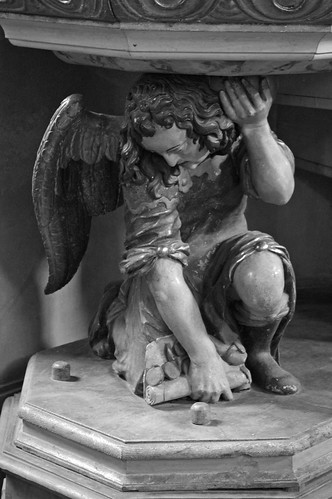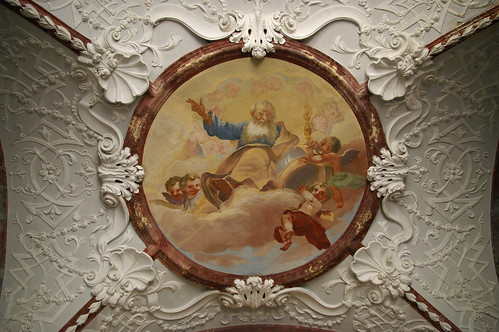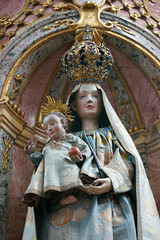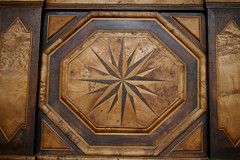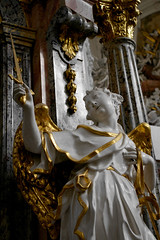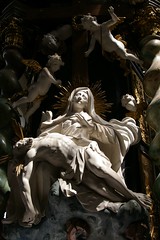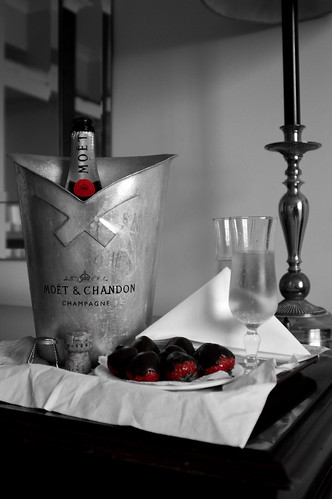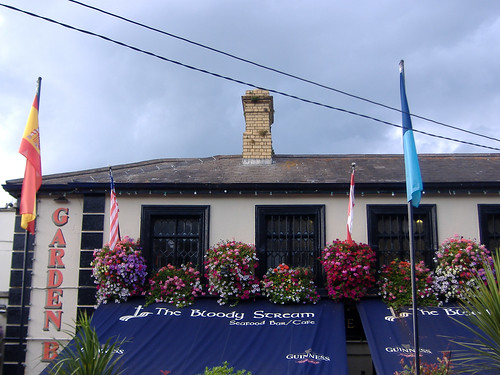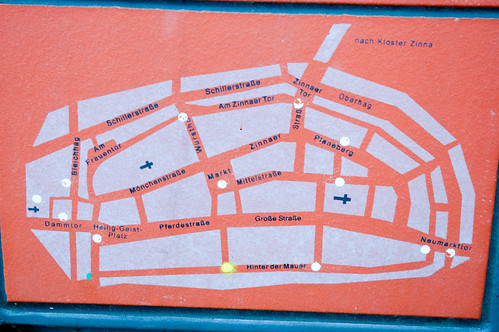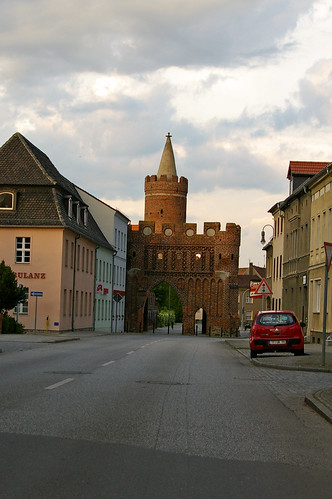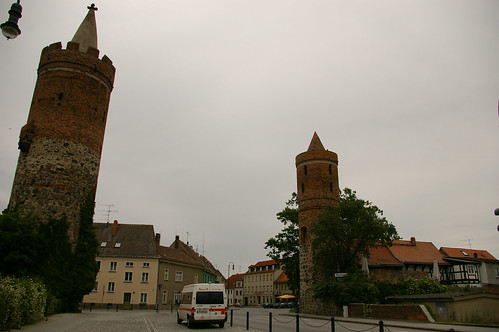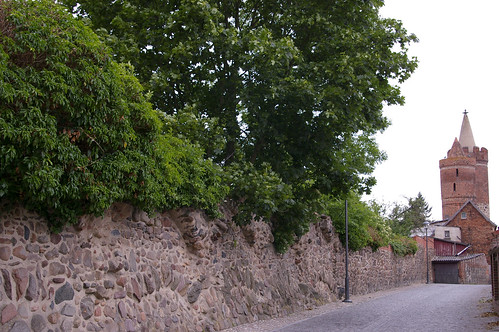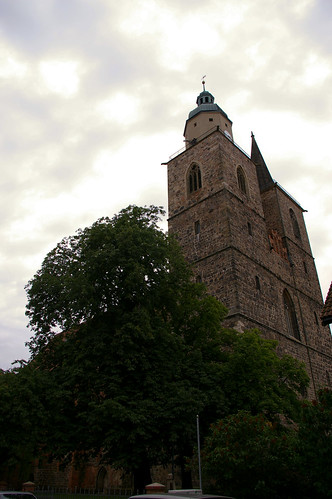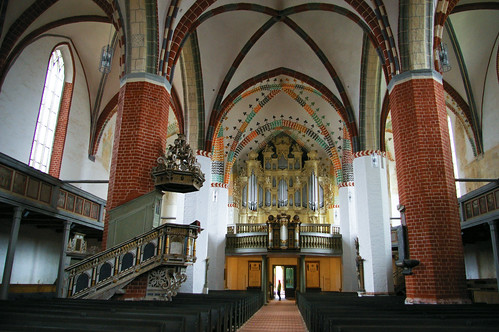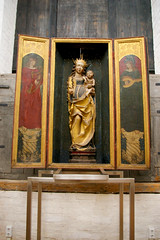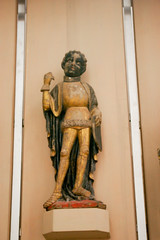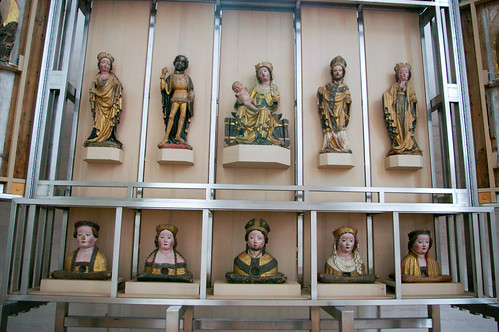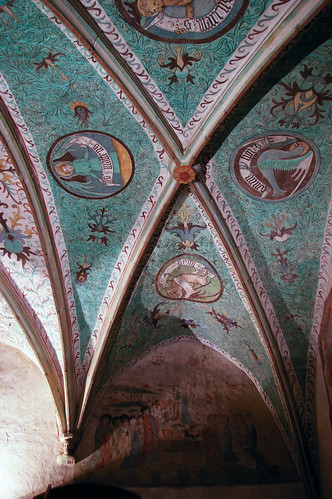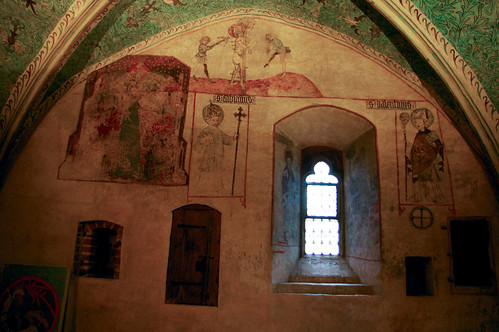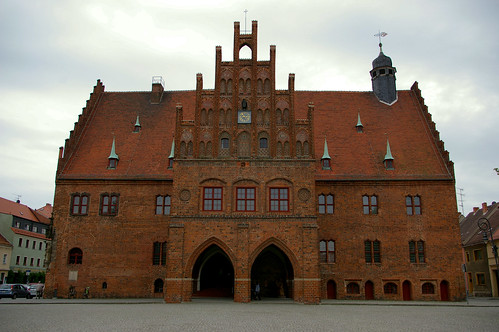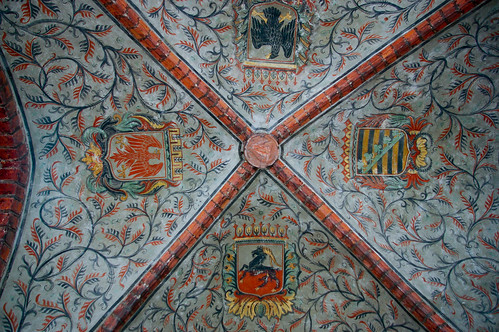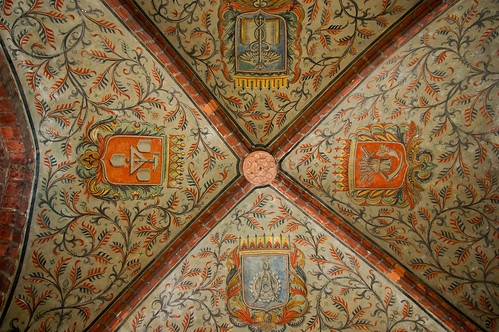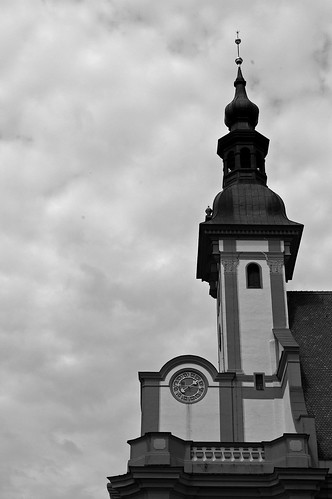
During our tour of all of the Mills (see prior post here) back on June 1st, Michael and I stopped for lunch at a place named Kloster Neuzille. This rural town is famous for two things – it’s Kloster brew beer (which was made by the monks in the 1400’s) and the Baroque church and gardens that are on the grounds of the monestary.
When you intially walk up, you basically have to pass a lovely pond covered with lilypads and little ducks with a nice view of the complex in the background. (The opposite side has cafes):
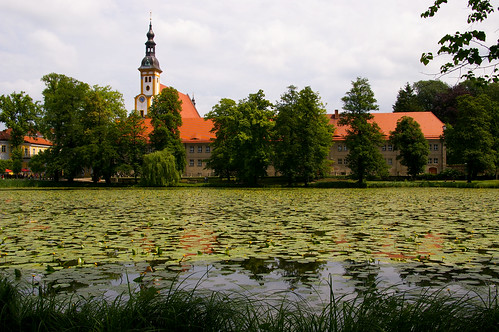
Cloister NeuZille Pond
Once you walk around the pond, you come up to the main entry of the complex, which looks relatively plain in yellow and white:
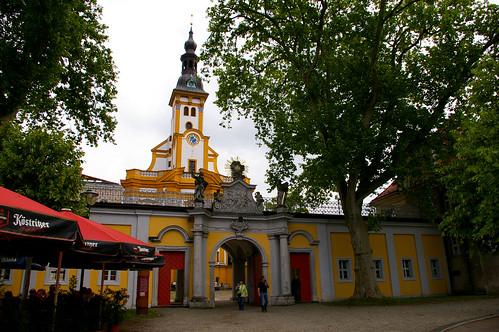
Cloister NeuZille complex from the outside
Thing is that the simple and relatively plain outside is rather decieving. Why? Because once you approach the doors – you recognize that these monks had lots of time and truly filled the church with magnificent carvings and artwork. A sample of the overpowering nature of the building (which made me think “how the heck do I photograph this and do it justice? Not sure that’s possible!” :
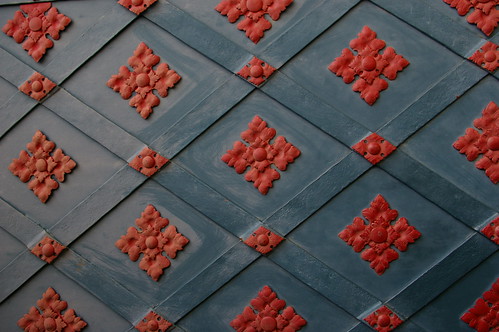
Entry Door Pattern
Click these for full photo:
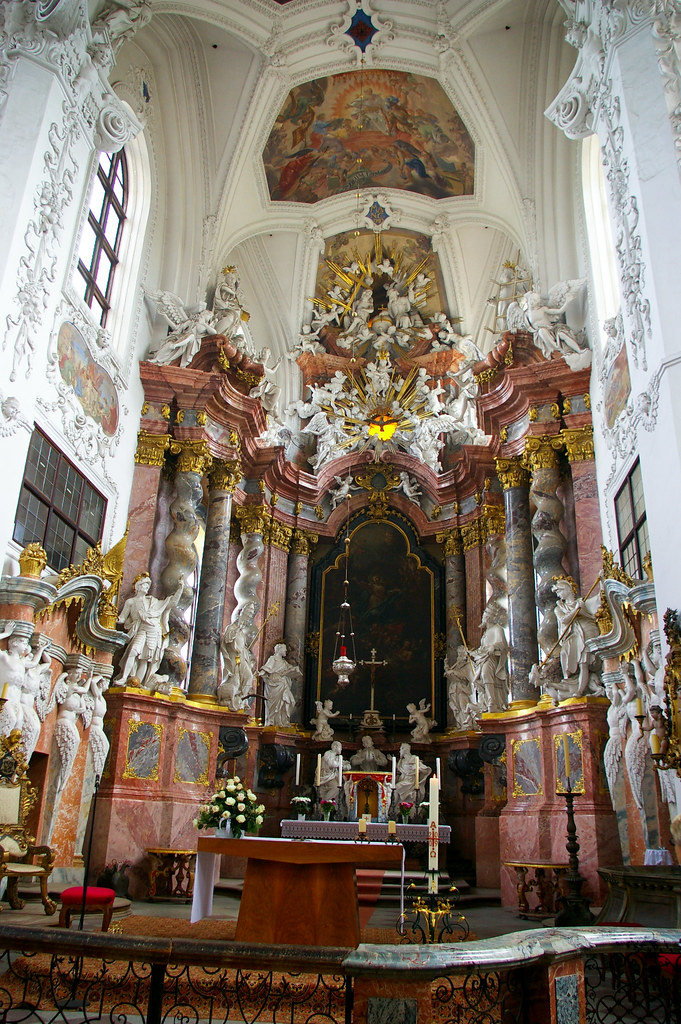
Main Altar

Looking back toward the Organ.
I finally decided to start focusing on the small pieces that made up the whole – to see if I could capture some of the beauty up close – as the entire details were too much.
1: Madonna with Sapphire Crown & Child; 2: Inlaid Compass Rose Wall Panelling; 3: Sword of Truth; 4: Released from Life
From there, I went out to the gardens, and found that they were just as lovely:
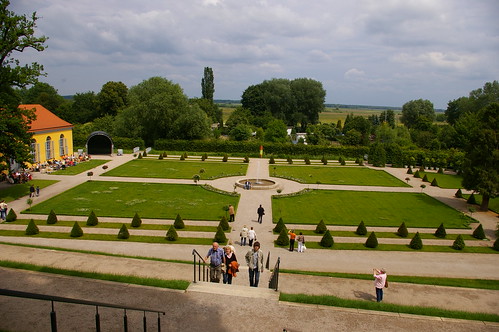
Baroque Garden Layout
as they were filled with roses, irises, and winding paths:
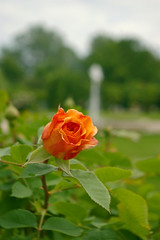
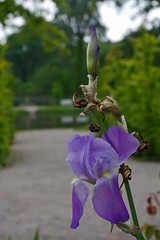
In the end, I came away feeling overwhelmed with the beauty, a knowledge of why this was added as a UNESCO world heritage site, and well, a feeling that no matter what, the Angels Support Us.
